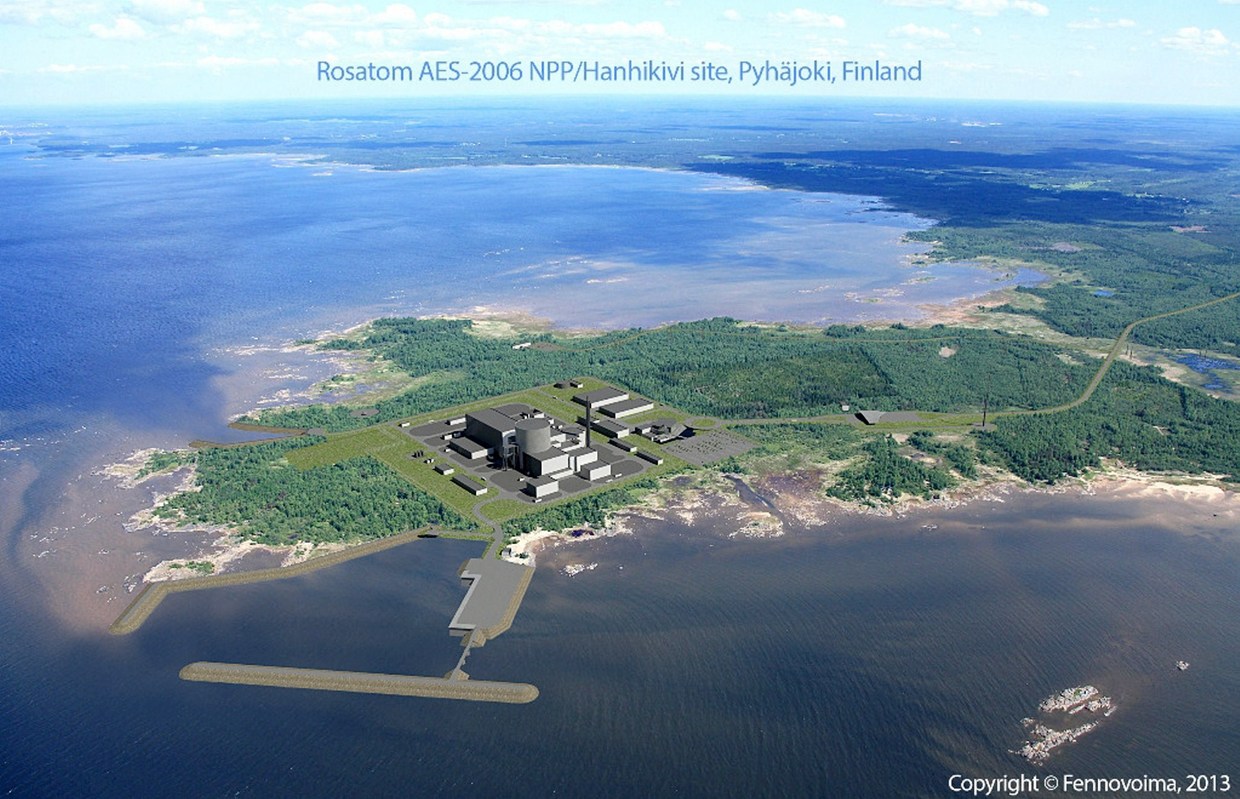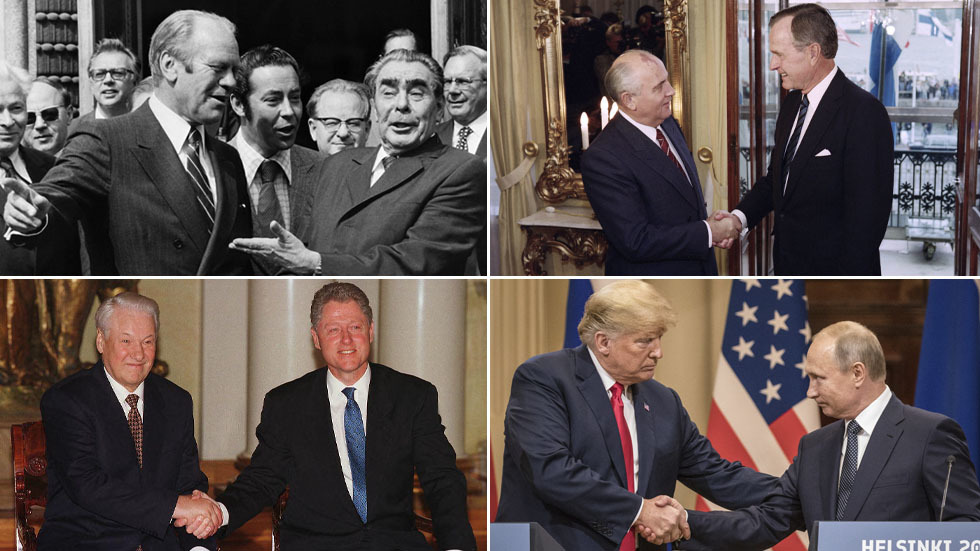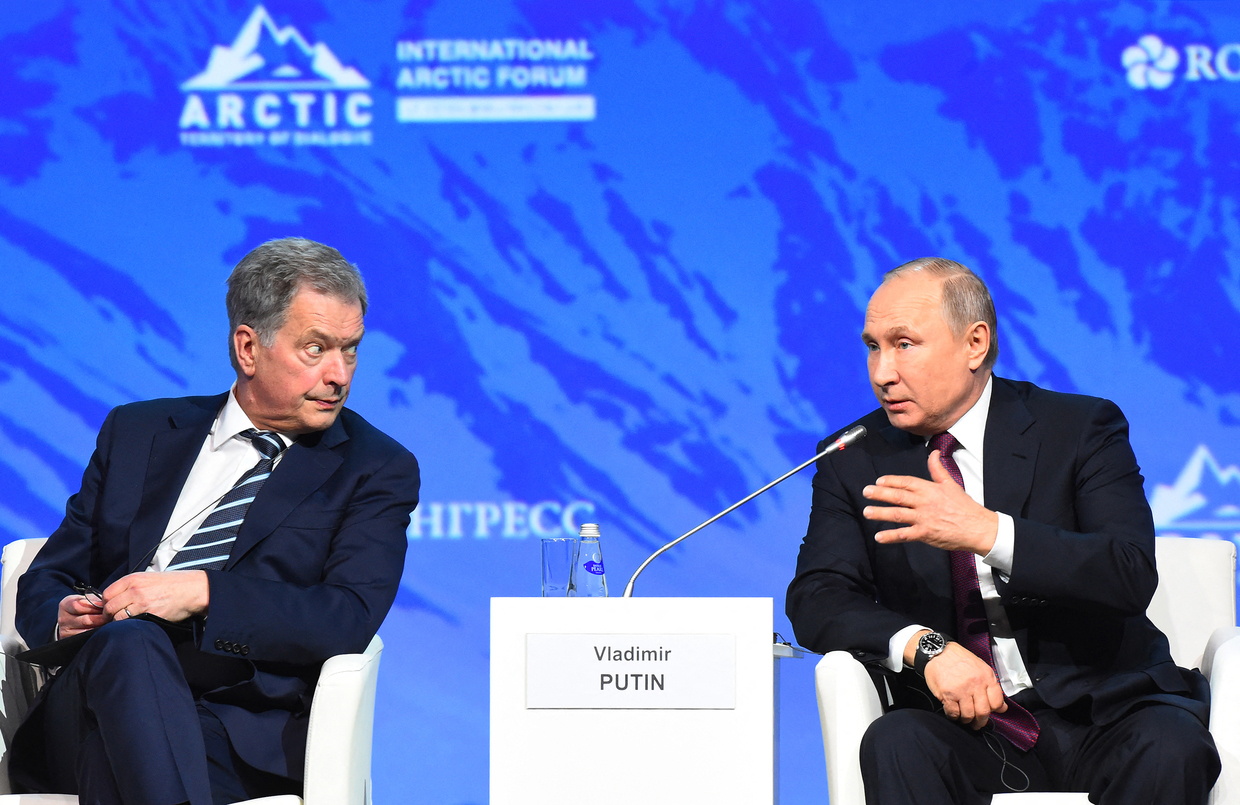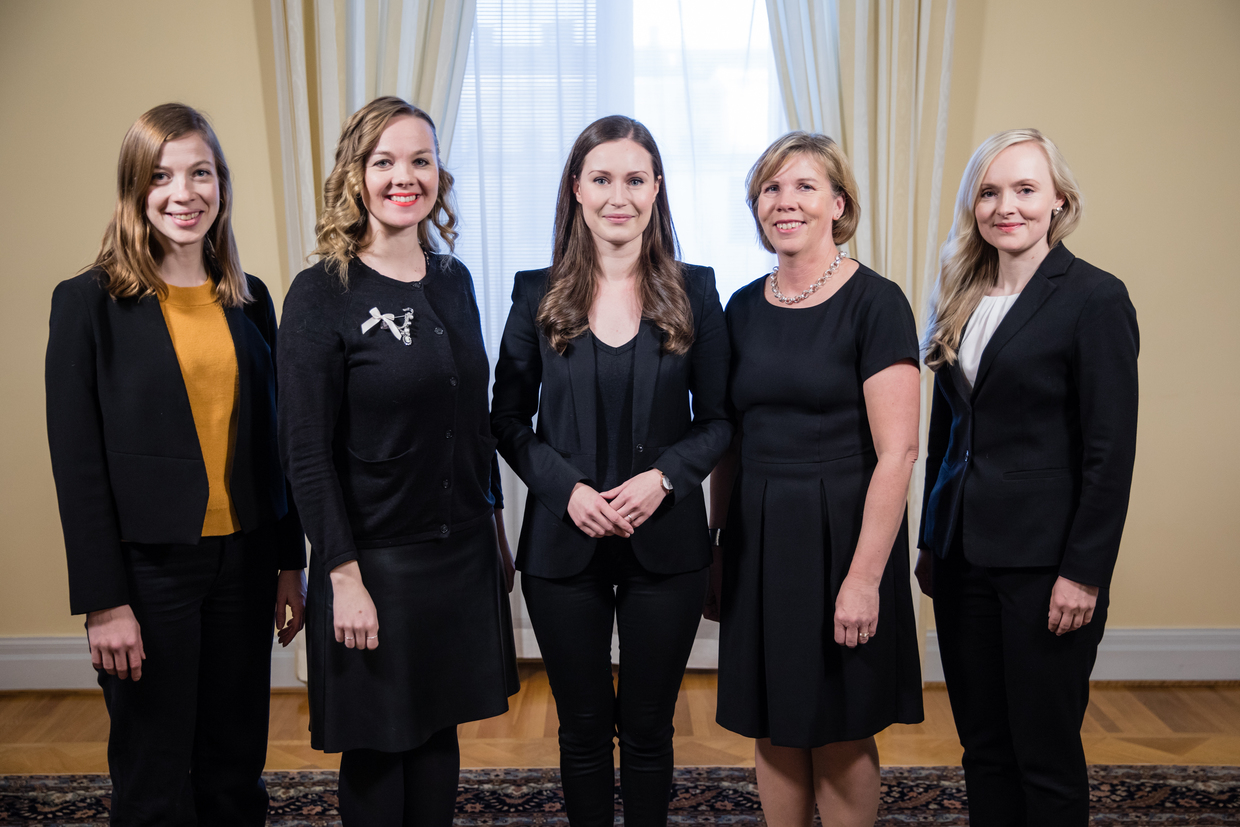Cold embrace of enmity: How one of Moscow's closest neighbors betrayed its neutrality and national interests to confront Russia

2022 saw a complete reversal of Finland’s approach towards building relations with its neighbor Russia. A policy of neutrality, which had been maintained since the end of World War II, gave way to sharp criticism of Russia’s offensive in Ukraine, to lobbying the EU for tough sanctions and an entry ban on Russian citizens, and to an application to join NATO.
However, Helsinki did not stop there and has taken some steps reminiscent of the absurd policies pursued by the Baltic states.
Containment on all fronts
In November, Finland unveiled plans to build a wall along its border with Russia. The Finns justified the need for a fence by their concerns that Moscow might use migrants as a tool of political pressure.
According to Le Monde, the 200-kilometer-long, three-meter-high fence topped with barbed wire will cost approximately €380 million ($403.5 million). It will be equipped with night-vision cameras, lights, and loudspeakers at its most vulnerable spots. This line of defense will be built in three stages between March 2023 and 2025-26. According to Finnish officials, it will be one of the most ambitious projects ever undertaken by the country’s border defense.
Another bizarre example was the situation with owners of purebred dogs from Russia, who had trouble registering their pets with the Finnish Kennel Club, even though, according to Finland’s national broadcaster YLE, all dogs living in Finland must, from 2023, be on the roster of the Finnish Food Safety Authority, irrespective of their place of birth.
Finland has also been lobbying for keeping international restrictions against Russia. Petri Honkonen, Finland’s minister of science and culture, believes the International Olympic Committee should not soften its stance and continue to exclude Russian and Belarusian athletes from competitions. “The international sanctions policy is based on the idea that Russian society must pay for its actions. It applies to Russian athletes, too,” he recently said.
The situation has also affected well-established economic links between the two countries. The most prominent example is the decision made in May by nuclear power company Fennovoima to terminate its agreement with Russian state corporation Rosatom, signed in 2013. Under the deal, Rosatom was to build a nuclear power plant, which would cover 40% of Finland’s energy needs.

Finland has also been an active supporter of Ukraine since the conflict flared up in February, providing a total of €189.2 million in aid. The 11th military aid package announced in late December will add another €28.8 million.
The sharply rising tensions have had implications for the broader Finnish and Russian public as well. A case in point is an incident which occurred in Helsinki during Independence Day celebrations on December 6, as a crowd burned the flag of the Russian Federation, prompting a diplomatic démarche, delivered by the Russian Foreign Ministry to the Finnish government.
Together not forever
It wasn’t always like that. The histories of Russia and its Finnish neighbor have long been intertwined, and, just over a 100 years ago, Helsinki and Moscow were regional centers within one state, the Russian Empire.
Finland became a part of Russia in 1809 after Russia’s decisive victory in the Russo-Swedish (Finnish) war, but it would be a mistake to call that annexation violent or harmful for the Finnish population. As a part of Sweden, Finland had neither national statehood, nor even autonomy, whereas in Russia the Grand Duchy of Finland enjoyed a great degree of internal and external freedom, and was granted a number of privileges not available to the other territories of the Russian Empire.
Addressing the opening session of the Diet of Finland, the local parliament, Alexander I (1777-1825) delivered a speech in French, where he said: “I have promised to maintain your constitution, your fundamental laws – and your gathering here guarantees my promise.” Finland joined the Russian Empire while being allowed to keep the Swedish Civil Code. Alexander II (1818-1881) is remembered for his role in reinstating Finnish parliamentarism, as evidenced by his statue in front of the Helsinki Cathedral on Senate Square.

For as long as a hundred years, Finland contributed almost nothing in payments for the needs of the state as a whole. The high degree of autonomy gave rise to Fennomania, a Finnish nationalist movement whose proponents argued for Finnish to be used by the region’s population instead of Swedish, which had been forced on them for centuries. The short-lived attempt at the Russification of Finland undertaken in the late 19th to early 20th century fell through when Eugen Schauman, a Finnish official, assassinated Governor-General of Finland Nikolay Bobrikov.
The period when Finland thrived as a part of the Russian Empire was cut short by the Russian Revolution.
In the 20th century, Finland, now independent, and the USSR found themselves in two opposing camps. November 30, 1939, marked the beginning of a short but bloody war between the two countries, which was also known as the Winter War. The official reason for the fighting was the desire of the Soviet leadership to move the country’s border away from Leningrad amid rising tensions in Europe. It issued an ultimatum to Finland with a demand to exchange territories, which Finland turned down. In spite of heavy losses (over 100,000 people killed), the USSR forced Finland to cede the northern part of the Karelian Isthmus and a number of islands in the Gulf of Finland, and to agree to lease a part of the Hanko Peninsula to the Soviet Union under the Moscow Peace Treaty.
Finland fought on the side of the Axis throughout most of World War II. It entered the war in June 1941 and drafted a total of 17.5% of its population. It is a well-known fact that Finland helped Germany hold Leningrad under siege by keeping civilians in concentration camps and occupying Soviet Karelia. It was not until 1944 that the advancing Red Army put an end to Finland’s participation in the war.
Those two wars, however, failed to turn Moscow and Helsinki into sworn enemies. On the contrary, after realizing the futility of a standoff with its powerful neighbor, Finland maintained its neutral status throughout the Cold War while fostering close economic ties with the USSR, which contributed to the country’s economic success.
The Scandinavian nation also enjoyed a high profile as a diplomatic venue, as the Finnish capital hosted four meetings between the US and Russian leaders. In 1975, Gerald Ford met Leonid Brezhnev there, followed by the Bush-Gorbachev summit in 1990, Bill Clinton’s meeting with Boris Yeltsin in 1997, and the Trump-Putin summit in 2018.

Against. Again
May 18, 2022 could be called the day Finland said goodbye to neutrality. On that day, it applied for NATO membership, alongside Sweden.
As of now, only the Hungarian and Turkish parliaments have refused to ratify Finland’s accession to the Alliance. In exchange for its consent, Stockholm and Helsinki promised Ankara they would stop supporting Kurdish and Turkish opposition organizations, proceed with applications for the extradition of Kurdistan Workers’ Party members, and lift arms embargos.
Finland’s Foreign Minister Pekka Haavisto named “Russian nuclear threats” as the main reason to seek NATO membership. On February 24, the security landscape in Europe changed, he said. In that context and since Finland shares a border with Russia, Helsinki wants to find support and prepare its defenses in advance.
At the same time, the state of Russia-Finland relations have never given cause for concern or estrangement over recent decades, said Vladimir Olenchenko, senior research fellow at the Center for European Studies of IMEMO in Moscow.
In an interview with RT, he stressed that Finland benefited greatly from partnering with Russia. Kristiina Hietasaari, director of Visit Finland, predicted the loss of over €600 million a year in revenue caused by banning Russian tourists.
Olenchenko believes that the human factor is the key driver behind this new trajectory of the Finnish government.
“Those in power in Finland today gravitate towards the Euro-Atlantic world, meaning Europe and the US. And since the US has taken an aggressive anti-Russian stance, Swedish and Finnish politics synchronize their efforts with the US agenda. Why they do this is a different question and we don’t have enough information to answer it. What’s important is that these politicians are lacking political independence, as their arguments are not the result of their own analysis or observations. It’s just copying the slogans created in the US,” he said.

Excessive Enthusiasm Never Did Anybody Any Good
Still, anti-Russian sentiment in Finland is far from that in the Baltic states, where hysteria levels are through the roof, Vadim Trukhachev, professor at the Faculty of International Relations, Political Science and Foreign Area Studies of RSUH in Moscow commented to RT. The prerequisites are there, though.
“Unlike the Balts, the Finns have learned to profit from their adjacency to Russia, in spite of never liking the country. Until recently, they’ve managed to hide their true attitude towards Russia, which is not dissimilar to that of Estonians, a related people. In Finnish politics, a generation has changed. Today’s 37-year-old prime minister, Sanna Marin, is worlds apart from former presidents Urho Kekkonen, Tarja Halonen, or even the 74-year-old incumbent president, Sauli Niinisto,” Trukhachev said.
The media sometimes calls Niinisto one of the Western ‘friends’ of President Putin. And even now, having spoken in favor of joining NATO, the president’s rhetoric is much less radical than what his younger PM is saying. In December 2022, he said that contact with Russia is vital for the nation, so Finland needs to preserve this, at least as neighbors with a 1,340-km border, even though it will take time to fully regain Finland’s trust.
“Marin’s generation holds values over money. As it turned out, old Finnish Russia-related phobias in Helsinki have been amplified by the desire to follow European values modern Russia doesn’t fit. This automatically makes Moscow a rival, if not an enemy. And the special military operation in Ukraine has triggered the Finnish fear that they might be next or the next-but-one target for Russia,” Trukhachev explained.
The last but not least factor of deterioration in relations between Russia and Finland is a small but influential Sweden diaspora in Finnish politics. The RSUH professor called this group “the most Russophobic community in Scandinavia.”

It’s All Doom and Gloom
Olenchenko believes Finnish politicians have been acting against their long-term interests lately. Change in bilateral relations with Moscow will inevitably impact the structure of Finland’s economy, its foreign trade and the living standards of its citizens, the expert said. Why Finland wants all that is an open question that has no rational answer.
“The benefit of neutrality is staying away from each pole, which allows [all] to retain equal relations with everybody, which is good for the economy and people,” Olenchenko argued.
There’s a certain diversity of opinions in Finland about its Russia policy, but there’s no chance the more pro-Russian Left Alliance would be able to form a single-party government, which is the only party that is against joining NATO. The Finnish government is a coalition, with the main driver of anti-Russian sentiment being the Green League, whose member Pekka Haavisto is the foreign minister, he added.
He also predicted that Russia-Finland relations will now follow the Russia-Sweden scenario: Bad, but better than its relations with the Baltic states or Poland. Finland’s stance on Russia will be harsher than most of the EU. It’s worth noting that Sweden and Finland are acting together, with Sweden taking the lead.
“Gone are the days when Russia could be pragmatic about its relations with Europe. The current generation of politicians are sticklers for rules and values; in their eyes, Russia is a weak nation, amounting to mere 2% of the world’s GDP, and could be crushed. It has also disturbed the world order and this means negotiations with it are off the table. Finland’s government obeys this European rule,” Trukhachev said.


















